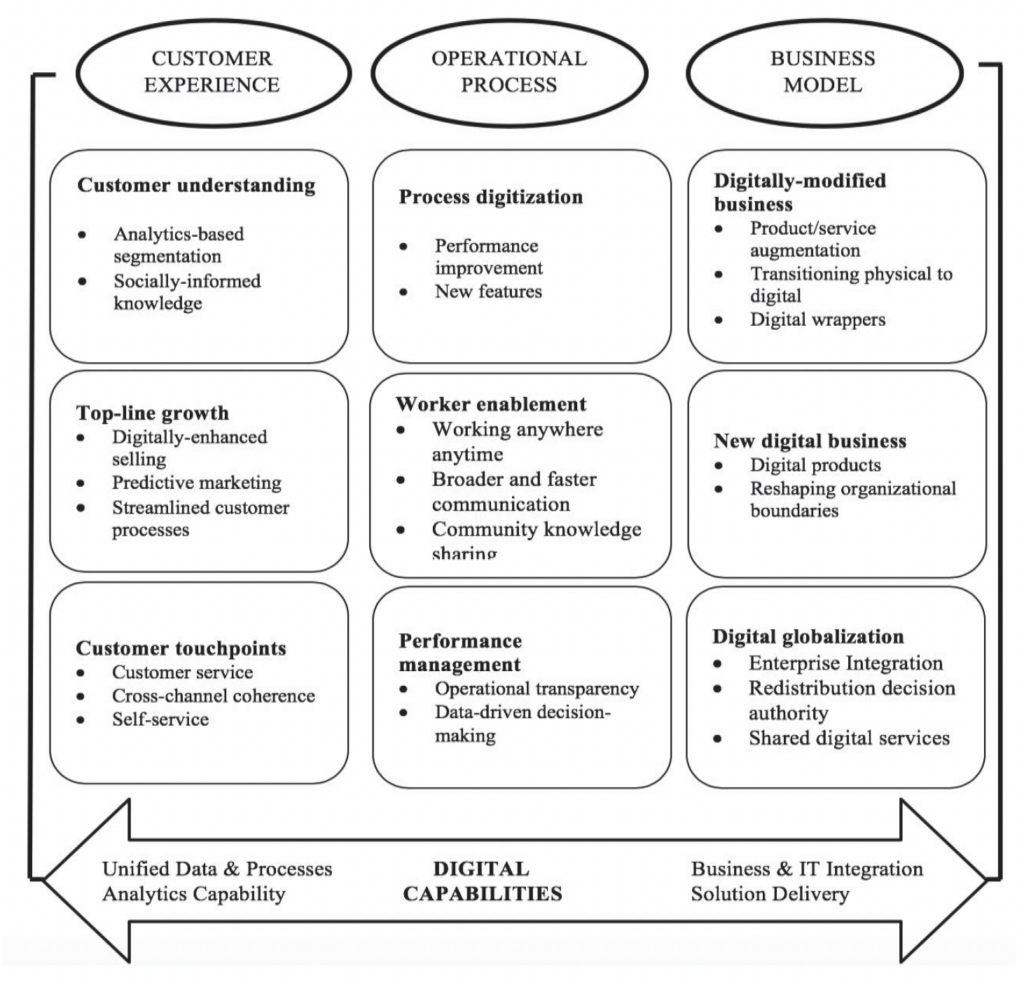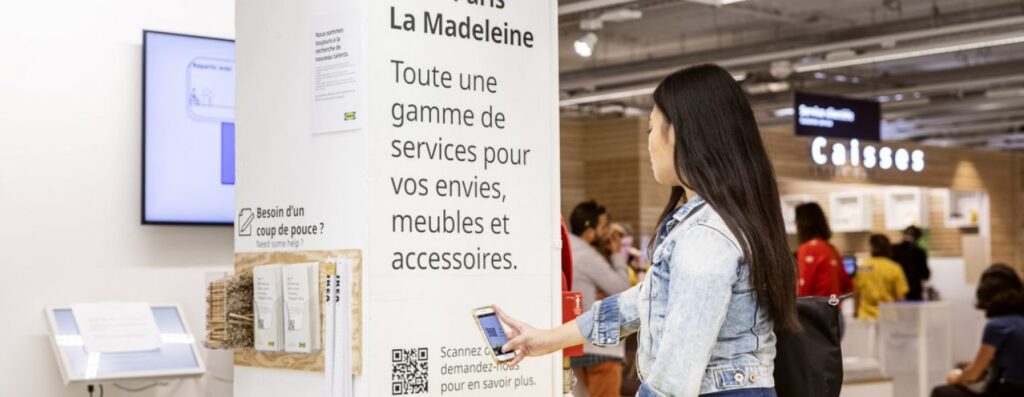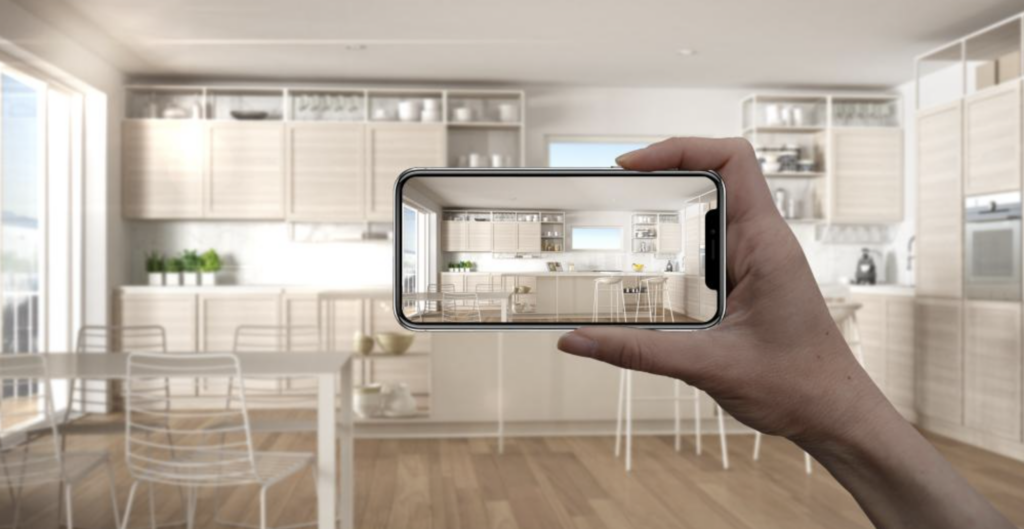IKEA’s Leap Forward with Data and AI

IKEA using data and AI to achieve digital innovation and transformation
IKEA’s Digital Transformation
Before becoming the largest furniture retailer in the world, Ingvar Kamprad started IKEA as a mail-order sales business in Sweden 1943. IKEA is now a global conglomerate or a multi-industry and multi-sector business organization. The success of this organization can be attributed to specific business strategies and tactics that revolve around offering well-designed and functional products at affordable prices.
Currently, IKEA is in the middle of a transformation of its business model that made it successful on a global scale. Specifically, for many decades IKEA’s business strategy was primarily based on having giant out-of-town warehouses, where shoppers pick their own furniture and then build it at home. But now it is looking increasingly at city-center stores, online shopping, home delivery and assembly, and more radical ideas such as leasing furniture.
Barbara Martin Coppola, CDO at IKEA Retail mentioned in Harvard Business Review:
“Digital transformation is not a goal in and of itself, and it is so much more than technology. We are transforming our business: We are exploring potential new offers to customers, new ways to bring our offers to customers, and new ways to operate our business. And in order to be successful, digital needs to be embedded in every aspect of IKEA. Digital is a way of working, making decisions, and managing the company.”
IKEA has been on the digital transformation journey and the supply chain has been part of it. Its online sales have boosted during lockdowns, and digital transformation has helped make the company sustainable. Artificial Intelligence-powered product recommendations and a more scientific approach to data have seen IKEA lift average order value (AOV) by 2% worldwide.
IKEA Utilizing Data + AI
1. Decision Making
The first step IKEA made was to radically improve its ability to get high-quality quantitative information to understand how its ‘recommendation’ solutions affected personalization. IKEA did this through high volume A/B testing on customer behavior and after initial experimentation, IKEA had a few key learnings: first, the mix of both UX and algorithms are really important for a cohesive customer experience; and second, the quality of personalization cannot be measured in silos. Statistical significance could be attained by testing several groups of recommendations at once.
2. Data for Personalization
Utilization of qualitative and psychographic data to understand its customers better and delve deeper to develop personalized experiences for its customers distinguish IKEA from its competitors. The qualitative data helps IKEA to understand that when a customer buys a piece of furniture, for example a sofa, the customer is bound to make other changes — the domino effect, to ensure the matching of the couch with the room, like lamps, curtains, and pillow covers. Like many modern businesses, IKEA’s digital strategy relies on customer data. However, the company understands the concerns around it and thus launched the Customer Data Promise to help customers understand, provide control, and the ability to make decisions about their data – for psychographic data.
3. Smarter Demand Forecasting
Optimizing stock across various in-store and online channels requires real-time analysis of customers’ buying behavior to minimize the demand and supply gap. To that end, IKEA created an innovative Demand Sensing, an AI-based tool that optimizes stock levels to ensure the consistency of shopping experiences for its customers. To create projections and predict future demand more intelligently and effectively, the tool leverages up to 200 data sources for each product. The system considers various influencing elements, like festival purchasing preferences, the impact of seasonal changes on purchase patterns, and weather forecasts, among others. It can even detect an increase in in-store visits during the month.
4. AR and VR for Visualization
IKEA Kreativ uses virtual and mixed-reality room design technology to let customers use the app to scan and design their space and bring products into their homes. Once the customer is happy with the design, they can add everything to their online cart and check out. Or, they can save everything to a shopping list and go to the store for pickup. IKEA Kreativ brings machine learning and 3D technology into something that is immediately applicable and helpful for customers. Both mobile and web applications connect to a scalable, containerized, cloud-based platform of microservices and AI pipelines, hosted by the Google Cloud Platform.
Results and Lessons
COVID influenced IKEA to commit to its digital transformation journey three years ago with a root and branch review of the company’s digital strategy, encompassing everything from back-office IT systems to how consumers experienced the buying process on their smart devices. IKEA visualizes key consumer data from around the world in real time, sharing insights across departments, markets, and nations. As a result, IKEA can be far more adaptable and proactive in its social efforts.
With more personalized and real-time recommendations with AI, IKEA was able to increase the number of relevant recommendations displayed on a page by +400%. Even though IKEA previously already had well-tuned recommendations of several types, with ‘Recommendations AI’ IKEA measured a +30% improvement in click-through rates as well. Average order value saw a +2% surge with numerous examples of how Recommendations AI could help customers find both attractive and directly complementary products, expanding the customer purchase from a single product to an entire home furnishing solution.
Reference
- Milne, R. (2019) “Inter Ikea’s Torbjorn Loof: making the vision clear” Financial Times, Available at: https://www.ft.com/content/6b250c0a-2486-11e9-b329-c7e6ceb5ffdf
- https://hbr.org/2021/06/inside-ikeas-digital-transformation
- https://www.architectmagazine.com/technology/ikea-launches-augmented-reality-application
- https://www.pymnts.com/news/retail/2022/inflation-stokes-recession-fears-while-slamming-retail-earnings/
- https://digiday.com/marketing/ikeas-chief-digital-officer-on-how-its-using-ai-to-personalized-online-shopping-working-with-influencers/
- https://newatlas.com/around-the-home/ikea-kreativ-ai-room-design-app/
- https://biz.crast.net/ikeas-chief-digital-officer-explains-how-hes-using-ai-for-personalized-online-shopping-working-with-influencers/






I love this! Thank you for sharing Jiwon.
It might be interesting to know if they have started to integrate online and offline experiences through data transformation. I am imagining a scenario like where a customer registers his/her visit to an offline store and scans the QR code of furniture that he or she is interested in (or even food order, which is impeccable for IKEA’s offline business!).
A very comprehensive blog post about Ikea’s business application of AI! The blog post focused more on the front-end AI applications and touched upon the back-stage digital operations as well. I wonder how interconnected the front and back ends are and what Ikea is thinking about as the next steps in the AI application!
Hi Jiwon, thank you for your Blog! It was intriguing to learn how IKEA is using artificial intelligence and data not only for their decision making and forecasting, but also to improve their customer experience. It also reminded me of the example of Starbucks. They are both collecting a lot of customer data to make seasonal changes and improve the experience compared to their competitors. I’m curious to see how the data collection is adapted to the local context and how IKEA is implementing all the new digital and technological aspects into their traditional business model step by step.
Thank you so much for this blogpost! It is impressive how IKEA was able to increase relevant recommendations by so much and how they make use of AI. I am wondering how far IKEA could take their strategy with using AI. I have some reservations, because I believe that many customers go to IKEA, because they love to walk around the store, only need one thing, and buy some candles and a hotdog on the way out. For IKEA, I think it would be necessary to focus on staying offline as well and focus on the warehouses as that is what at least in my head IKEA still stands for. On the other hand, I can see that using AI can improve the customer experience in other areas, for example if they are looking for anything specific.
Thank you for your blog! it’s really interesting to see that IKEA has introduced AR & VR technology to help customers to increase customer’s convenience. But I’m wondering how will the customer shopping behavior change after using AR & VR tech and its impact will be translated to the IKEA’s topline? Additionally, I’m curious to understand did IKEA make this move because of any existing competitive forces in the market, as I’m sure they aren’t the first mover in the furniture retail business to use the AR & VR tech. And really interested to see how this digital strategy pans out for IKEA.
This is an awesome post! I think like others here, I’m curious about how they can use the AI to actually improve their supply chain. I have often been frustrated after going really far outside the city to one of their stores to realize that they are out of stock of something and don’t know when it will be back in stock. It seems like some of their AI is gimicky but not actually addressing revenue-generating-issues that need to be addressed!
It’s always incredible to me when a store is able to find sources of data in person to be able to improve CX! I still think they’re a little behind the other furniture stores like Williams Sonoma etc. who have done several AR / VR acquisitions to help customers plan their homes and shopping better, but also think that might be because of their customer base / demographic. I also wonder how much they are integrated the in-store experience with more targeted email campaigns (something along the lines of ‘we saw you didn’t check out the bed you scanned twice and spent 10 minutes looking at, what were you looking for / here’s a discount, etc.)